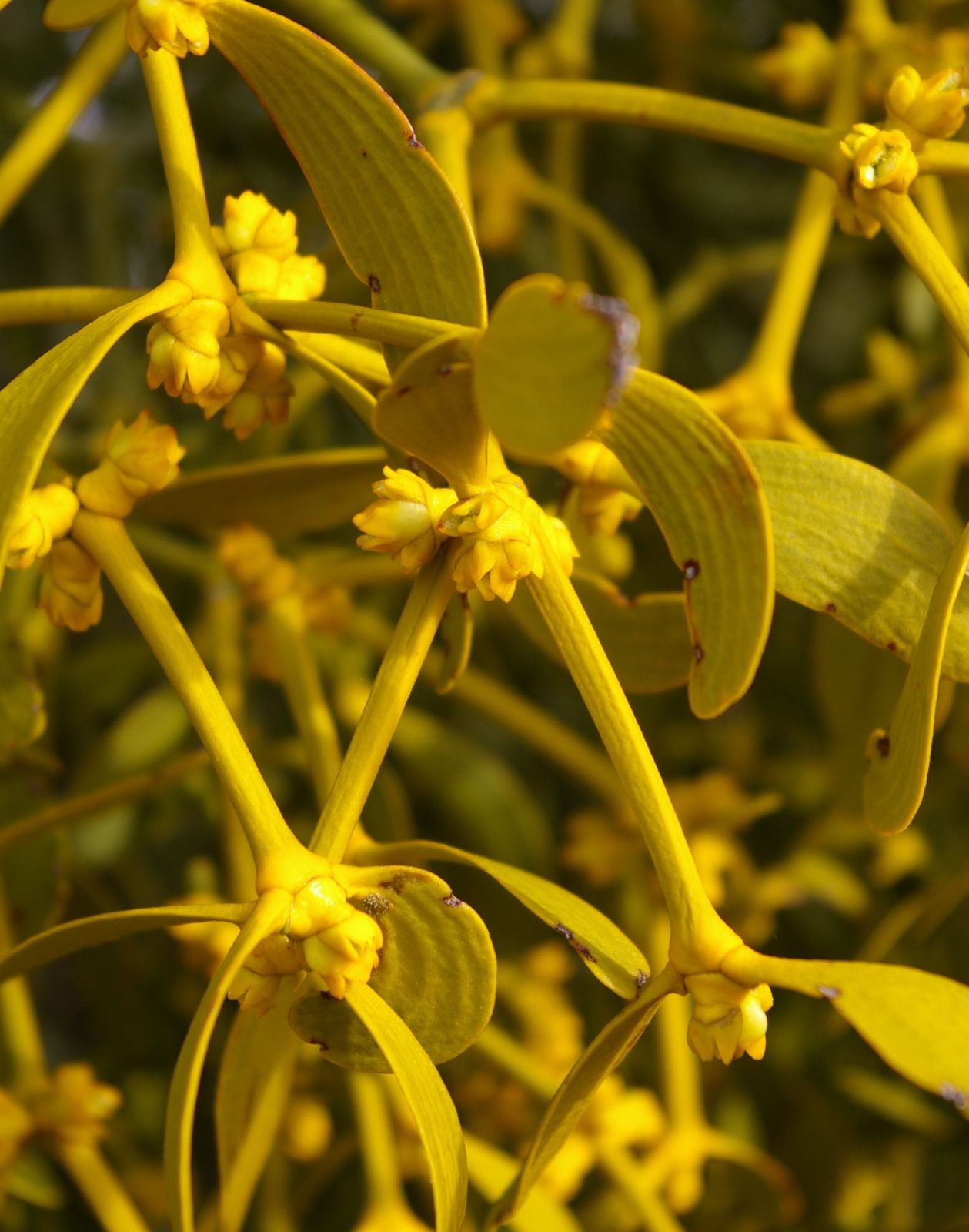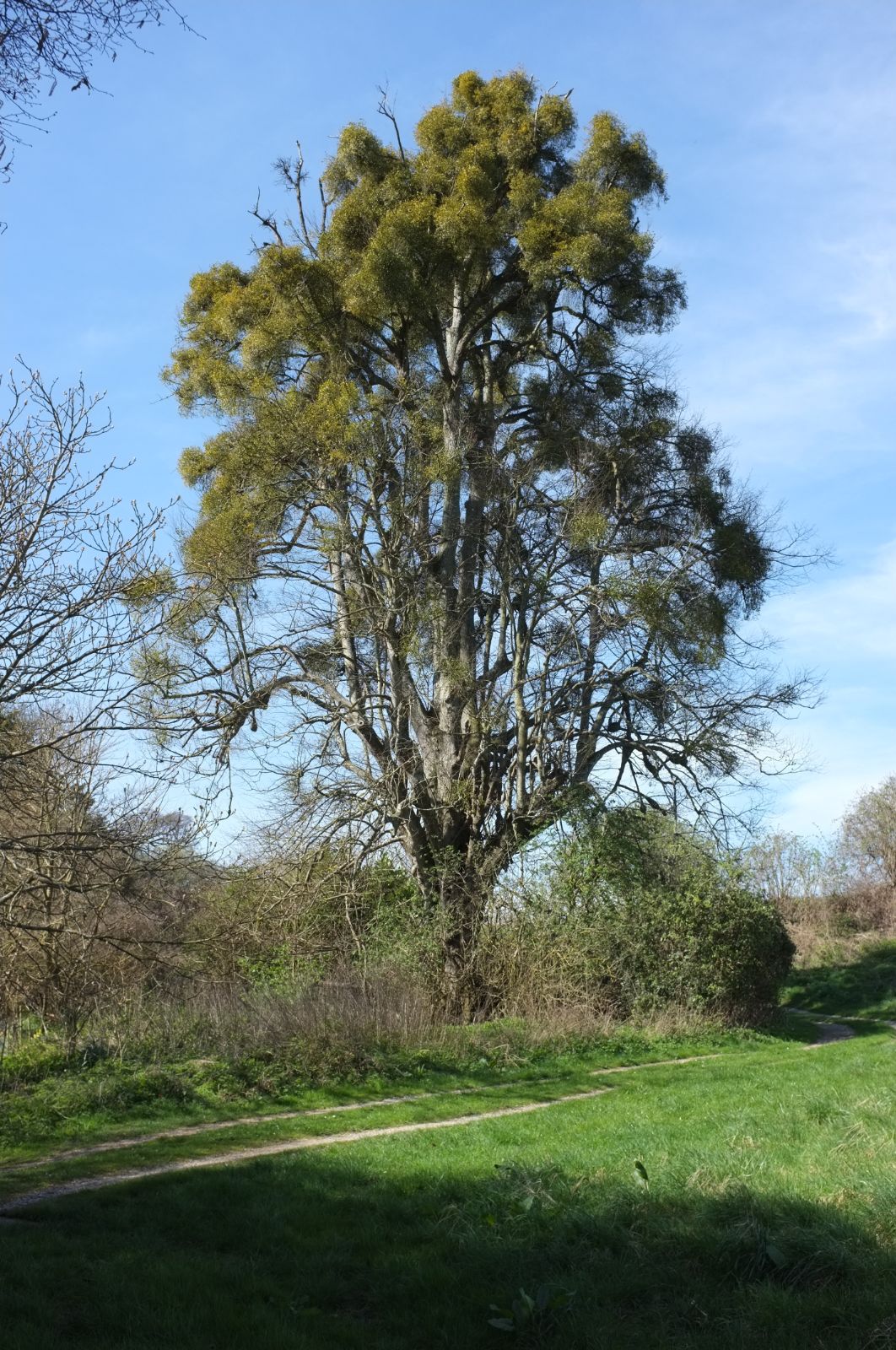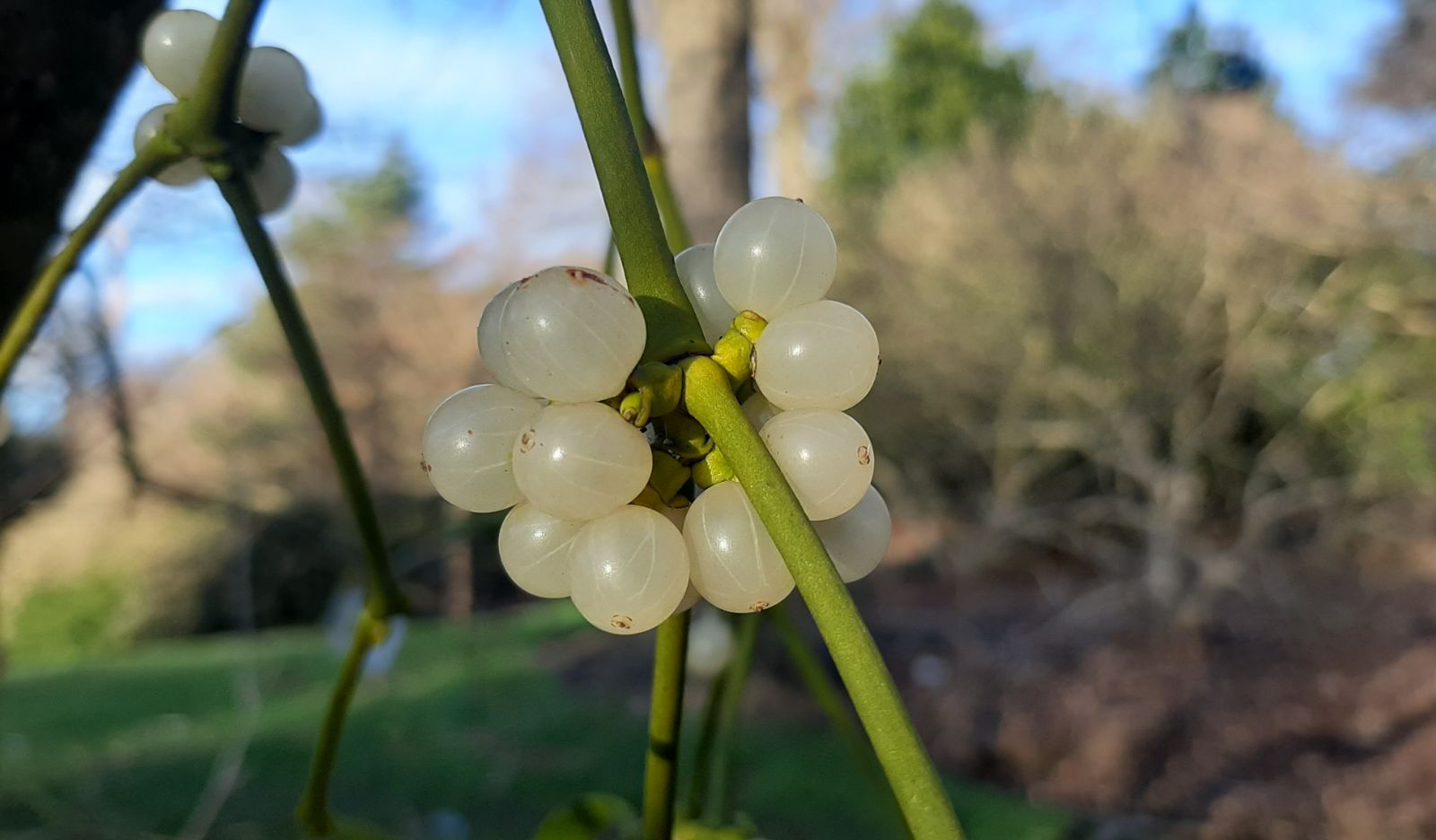Viscum album
Credits
Article from Bean's Trees and Shrubs Hardy in the British Isles
Recommended citation
'Viscum album' from the website Trees and Shrubs Online (treesandshrubsonline.
Genus
Other taxa in genus
An evergreen shrub of tawny, yellowish aspect, parasitic on various trees, usually in the form of a rounded, pendulous bush; branches glabrous, bifurcating at each joint. Leaves opposite, narrowly oblong or obovate, tapering at the base, rounded at the apex, 11⁄2 to 4 in. long, 1⁄4 to 1 in. wide, not stalked. Flowers inconspicuous, almost stalkless, and produced in the forks of the branches, the sexes often on separate plants. Fruit a white, translucent berry 1⁄3 in. wide, whose single seed is embedded in a very viscid pulp; ripe in midwinter.
Native of Europe, where it is widespread, and of temperate Asia and N. Africa. It is found in Britain as far north as N. Wales and Yorkshire. The mistletoe is frequently cultivated in gardens for its interest and associations, and nurserymen supply it growing on apple trees. The two sexes should be obtained if possible on the same or separate host plants. It must be propagated by seed, and this is best done by bursting the berry on the youngish bark of the host plant. The glutinous substance in which the seed is embedded soon hardens and attaches the seed securely. It is not necessary to make a slit in the bark for the seed.
In nature the mistletoe is spread by birds. They eat the fruits, but a thick coating of gluten remains on the seeds which is made even more adhesive by partial digestion. It grows most commonly perhaps on apple trees, so much so as to be a pest in some of the west country orchards. Although, because of its association with the rites of the ancient Druids, its most famous host plant is the oak, it is in reality very rarely seen on that tree. But there appear to be few of our native trees on which it will not grow.
The ancient belief was that the seed would only germinate after it had passed through the digestive tract of a bird. But the naturalist John Ray doubted this, and at his suggestion ‘Mr Doody, an Apothecary of London, inserted a seed of the mistletoe into the bark of a White. Poplar tree … with complete success … . It is wonderful, as Ray justly observes, that Botanists and Philosophers should choose to argue pro and con so many years, not to say centuries, rather than take the pains to consult nature, and determine the matter by an easy experiment.’ (Thomas Martyn, in his edition of Miller’s Dictionary, Vol. II (1809)).
On the continent of Europe two races of mistletoe occur in addition to the typical one, both confined to conifers: subsp. abietis (Wiesb.) Abromeit, found on Abies, and subsp. austriacum (Wiesb.) Vollmann, living mainly on pines and occasionally on spruce (and artificially established on other conifers, including Cedrus atlantica).





